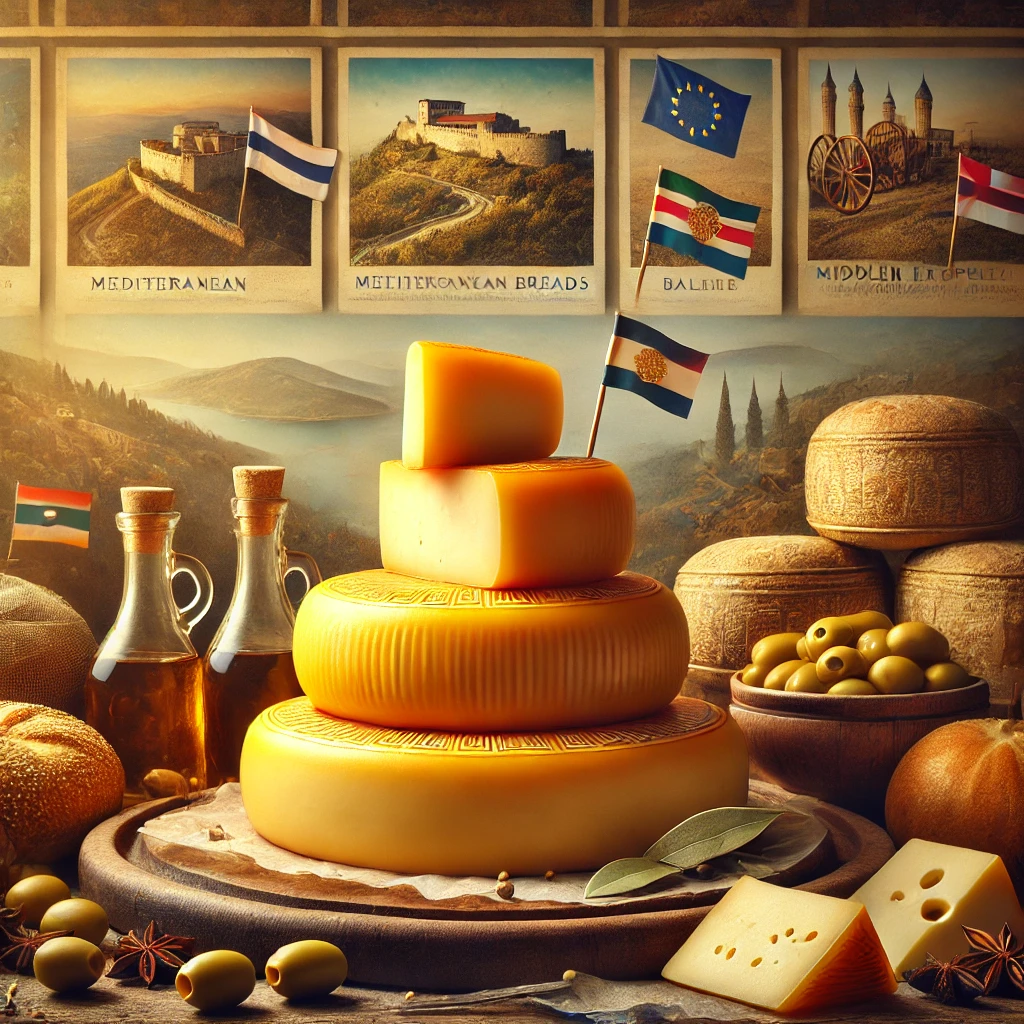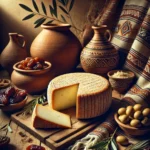Kashkaval cheese is a beloved semi-hard cheese with deep roots across Eastern Europe, the Balkans, and the Mediterranean. Known for its supple texture, buttery aroma, and exceptional melting ability, Kashkaval has become a staple in both everyday cooking and gourmet kitchens.
Although widely enjoyed in countries like Bulgaria, Romania, Greece, Turkey, and even the Middle East, the true origins of Kashkaval reflect centuries of cultural exchange, migrations, and cheesemaking traditions. Today, it stands as one of the most recognized cheeses in these regions—especially in traditional pastries, grilled dishes, and flavorful appetizers.
What Is Kashkaval Cheese?

Kashkaval is a semi-hard yellow cheese traditionally made from:
-
Cow’s milk
-
Sheep’s milk
-
Or a blend of both
Its name is believed to come from the Italian phrase cascio cavallo, referring to cheeses aged by hanging in pairs. Over time, the cheese-making style spread throughout the Balkans and Mediterranean, evolving into local variations now known collectively as Kashkaval.
This cheese is valued for its:
-
Smooth, semi-hard structure
-
Buttery yet mildly sharp taste
-
Versatility in both raw and cooked forms
-
Excellent melting properties
If you’ve ever wondered “What is Kashkaval?”, it’s best described as a Mediterranean cousin of cheddar—but with a more buttery, elastic profile.
Where Does Kashkaval Cheese Come From? (Kashkaval Origin)

The origin of Kashkaval cheese is shared among several Mediterranean cultures. Historians trace it back to:
-
Southern Italy (as caciocavallo)
-
The Balkans (Bulgaria, Serbia, North Macedonia)
-
The Eastern Mediterranean (Turkey and Greece)
As shepherding communities migrated and traded, this cheese style spread and evolved. Each region now produces a signature version:
✔ Kashkaval Balkan-Style (Bulgaria, Serbia)
More tangy, firmer, often from sheep’s milk.
✔ Greek Kashkaval
Creamier, sometimes used in kashkaval saganaki—a pan-fried appetizer like halloumi saganaki.
✔ Turkish Kaşar or Kaşkaval
Mild, buttery, and extremely melt-friendly.
Because of this shared history, Kashkaval is considered an international cheese with a multicultural identity.
What Does Kashkaval Cheese Taste Like?
If you’re searching “What does Kashkaval cheese taste like?”, here’s what you can expect:
Flavor Notes
-
Buttery
-
Mildly sharp
-
Slightly nutty
-
Rich and creamy
-
More robust when made from sheep’s milk
Texture
-
Semi-hard
-
Smooth and slightly elastic
-
Sliceable but also meltable
The combination of mellow flavor and pliable texture makes Kashkaval ideal for both snacking and cooking.
Does Kashkaval Cheese Melt?
Yes—Kashkaval melts beautifully.
This is one of the reasons it is so popular in:
-
Grilled sandwiches
-
Pasta dishes
-
Baked casseroles
-
Stuffed pastries
-
Cheese pies
-
Pizza-style flatbreads
It becomes gooey, stretchy, and golden, similar to mozzarella or provolone, but with a richer taste.
Because of its perfect melting qualities, it is often used as a star ingredient in dishes like:
Kashkaval Saganaki
A Greek-inspired appetizer where Kashkaval is lightly floured, pan-fried, and served sizzling hot.
Crispy outside, soft and melty inside—this dish shows exactly why the cheese is so loved.
How Kashkaval Cheese Is Made
While the techniques vary by region, the process usually includes:
-
Heating cow or sheep milk
-
Adding cultures and natural rennet
-
Cutting and cooking the curds
-
Kneading them into a stretchy texture
-
Pressing the cheese into wheels
-
Salt brining
-
Aging from 2 to 6 months
This aging process creates the signature buttery yet tangy notes that define Kashkaval.
How to Use Kashkaval in Cooking
Kashkaval’s adaptability makes it a favorite in home kitchens and restaurants.
Popular Uses
-
Sliced on cheese boards
-
Melted in grilled sandwiches
-
Shredded on pasta
-
Baked into pastries
-
Pan-fried (saganaki style)
-
Melted over roasted vegetables
-
Used as pizza topping
Its unique taste enhances both simple and complex dishes.
Kashkaval vs. Other Cheeses
If you’re unfamiliar with Kashkaval, you might compare it to:
-
Provolone – Similar melting qualities
-
Cheddar – Similar sharpness when aged
-
Edam/Gouda – Comparable texture
-
Caciocavallo – Direct Italian cousin
However, Kashkaval remains distinct thanks to its Mediterranean heritage and sheep-milk variations.
Why Kashkaval Is Loved Worldwide
Kashkaval cheese continues to gain global popularity because it is:
-
Affordable
-
Easy to cook with
-
Flavor-rich but not overpowering
-
Internationally recognized
-
Available in both mild and aged varieties
Its multicultural roots and versatile profile make it a favorite among chefs, families, and cheese enthusiasts.
Conclusion: A Cheese with True International Origins
Kashkaval cheese is more than a delicious dairy product—it’s a symbol of shared culinary traditions across Europe and the Mediterranean. With its international origins, smooth texture, and irresistible taste, Kashkaval has earned a place in global cuisine.
Whether you’re exploring its history or simply looking for a flavorful, melt-friendly cheese, Kashkaval is always a rewarding choice.



